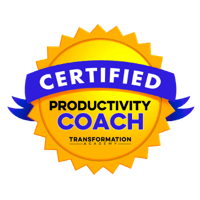You’re probably already well aware of how popular LinkedIn has become for the modern business professional. But beyond networking with other likeminded individuals, searching for career opportunities or finding top talent for your own business, did you know that LinkedIn can also be a powerful and effective tool for generating leads? It’s true, and the secret lies within LinkedIn Groups. Here’s the scoop.
First, it’s important to point out that there are two different ways to approach LinkedIn Groups. The first is as a member. In other words, you join existing LinkedIn Groups that are relevant to your line of work or expertise. There, you can share content and participate in discussions with other members. The other is by creating a group of your own that others can join. That being said, this article focuses on how to generate leads as a LinkedIn Group member.
To begin, search for and start joining groups that are appropriately aligned with your niche – for instance, groups that are related to your particular industry or expertise.
Next, start participating and stay active. You should begin by joining in with other discussions and sharing your own perspective. The goal is to establish yourself as a valued (read: not spammy) participant. Over time, you can also begin to share content of your own. Keep in mind that as a member, you are at the mercy of the group owner/admins. Shared content typically requires approval before publishing, but provided it’s relevant and of good quality, you shouldn’t have a problem.
Include content upgrades, aka lead magnets. These are basically additional pieces of information that are included in your content which are designed to bring readers to the next step in the sales funnel. For instance, if you were writing about SEO, you might include a link to a handy SEO checklist you’ve created. (Take note that in order for content upgrades to work they must be super relevant and truly valuable.)
A great way to really promote and generate engagement around your content is to share it with other group members via direct message. You should start, however, with a general introduction to lay the groundwork.
Here’s a basic example of a message you might send:
Hey [name],
It’s great to connect with you via [group name]. I hope all is going well with [company name]! I’d love the opportunity to exchange thoughts and ideas. Let’s talk soon!
Of course, not everyone will bite, but some will and it’s a great way to establish a relationship on which to build and nurture.
As you receive responses, build on that relationship and include relevant content wherever it makes sense. (Be very careful about this and don’t overdo it, otherwise you could end up blocked and removed.)
Don’t forget to share content in the comments as well. In addition to sharing content directly via LinkedIn, you may also find opportunities to link back to an article, blog post or other resource that is housed on your site. As a rule of thumb, sharing links should only be done when it is relevant to the topic at hand, adds value to the discussion and/or supports the point you are trying to make.
Finally, consider asking the group owner to share your content via an announcement. Again, provided that the content you’ve created is of excellent quality, relevant to the audience at hand and valuable, your chances of getting a ‘yes’ should be pretty good.
In conclusion, LinkedIn can be an effective tool for getting your content out to the masses, developing and nurturing relationships and ultimately converting those readers into paying customers.


